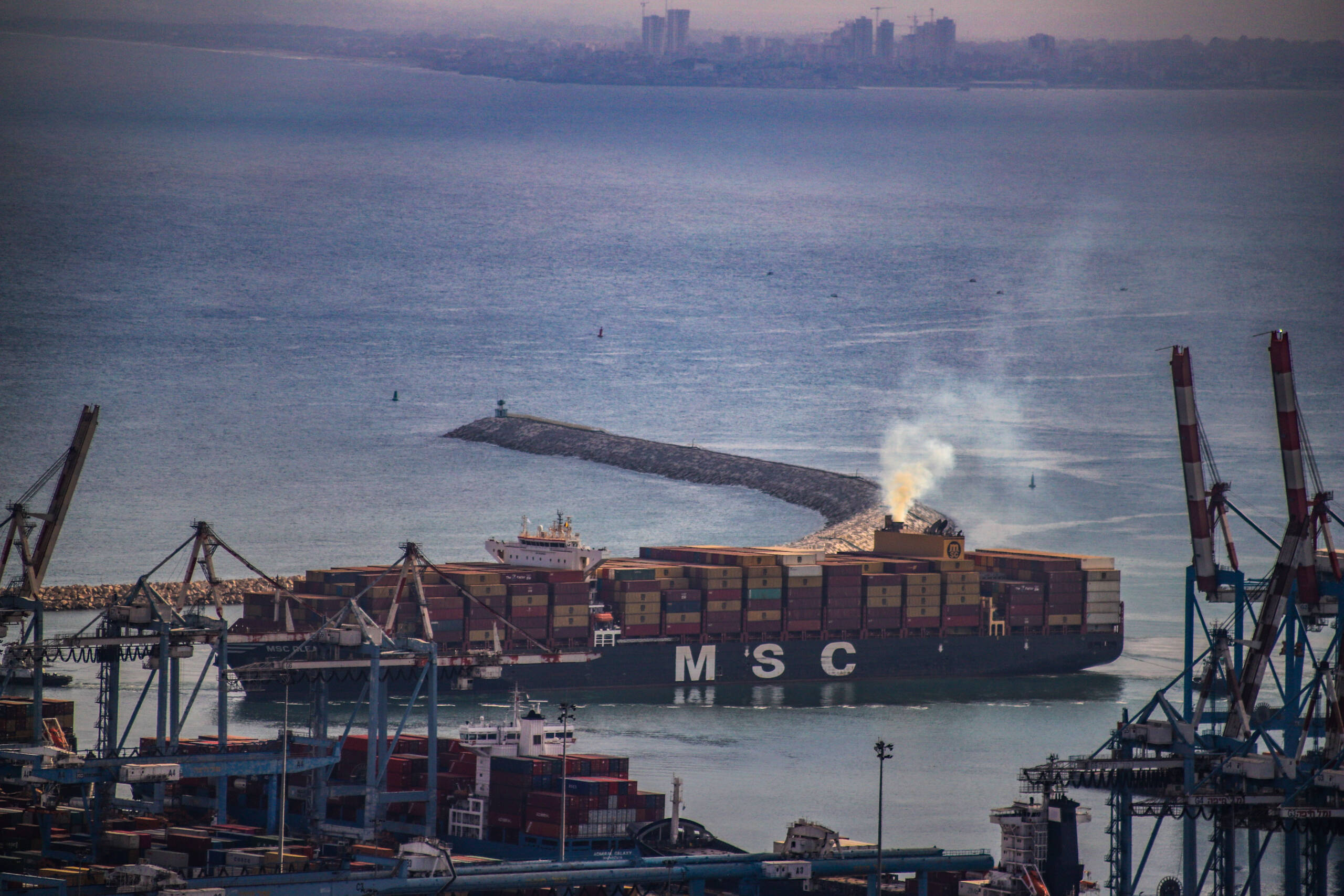Navigating Toward a Greener Horizon: The Future of Decarbonizing Maritime Shipping
The image portrays a bustling seaport, where a massive MSC container ship is docked. The ship is laden with multicolored shipping containers, meticulously stacked, reflecting the global nature of maritime trade. Smoke billows from the ship’s exhaust, a stark reminder of the environmental impact of traditional shipping fuels. This scene is framed by towering cranes, essential for the loading and unloading of cargo, and a distant cityscape shrouded in a light haze, indicating urban proximity and industrial activity.

In the foreground, the harbor infrastructure is visible, with cranes and various maritime equipment scattered across the dock. The cranes, painted in contrasting colors of white and blue, stand tall, emphasizing their importance in the logistics chain. The still water in the harbor mirrors the activities, creating a serene yet industrious atmosphere. Beyond the harbor, a protective breakwater juts into the sea, guiding vessels safely into the port. The city skyline in the background is dominated by high-rise buildings, some still under construction, suggesting economic growth and urban expansion.
This image encapsulates the challenges and opportunities in the effort to decarbonize maritime shipping. The visible smoke underscores the urgency of transitioning to cleaner fuels and technologies. The shipping industry, a backbone of global trade, significantly contributes to greenhouse gas emissions. However, innovative solutions are on the horizon. The transition to alternative fuels such as liquefied natural gas (LNG), hydrogen, and ammonia is gaining momentum. These fuels promise to reduce the carbon footprint of shipping, though they come with their own set of challenges, including the need for new infrastructure and safety protocols.
Moreover, advancements in energy efficiency and the adoption of renewable energy sources are crucial. Wind-assisted propulsion systems and solar panels integrated into ship designs are examples of such innovations. These technologies, combined with digital tools for route optimization and improved hull designs, can significantly cut emissions. The image, with its blend of industrial might and environmental challenge, serves as a potent reminder of the need for a coordinated global effort to transform maritime shipping into a more sustainable industry.
The economic implications of decarbonizing shipping are profound. Investments in new technologies and infrastructure will create jobs and stimulate innovation. Ports, like the one depicted, will need to adapt, becoming hubs for clean energy and green logistics. International cooperation is essential to establish regulatory frameworks and standards that will drive the industry toward sustainability. The presence of diverse stakeholders, from shipping companies to port authorities and urban planners, highlights the collaborative effort required.
In this evolving landscape, initiatives such as the International Maritime Organization’s (IMO) strategy to reduce greenhouse gas emissions are pivotal. These policies aim to cut emissions by at least 50% by 2050 compared to 2008 levels, pushing the industry toward full decarbonization in this century. The image thus not only captures the present state of maritime shipping but also hints at the transformative journey ahead.
The scene, while industrial, evokes a sense of anticipation. The still water, the distant city, and the monumental ship all seem to await the inevitable shift towards greener practices. This visual narrative invites reflection on the intricate balance between economic vitality and environmental stewardship, urging a collective movement towards a sustainable future for maritime shipping.